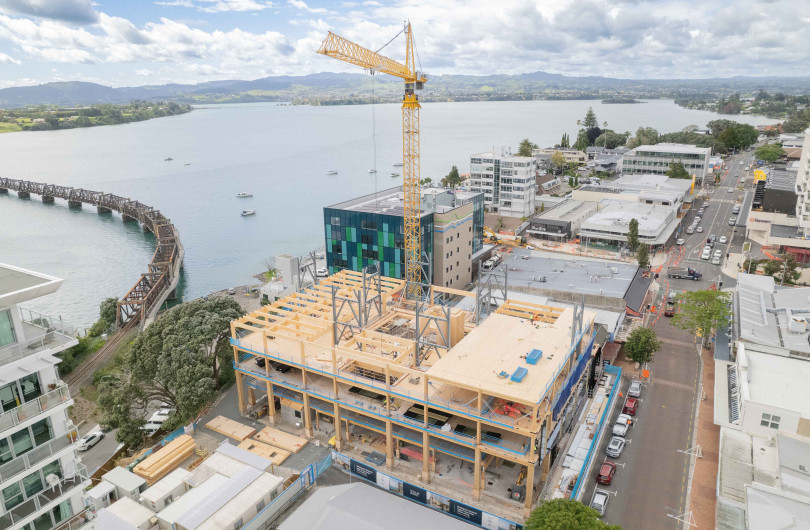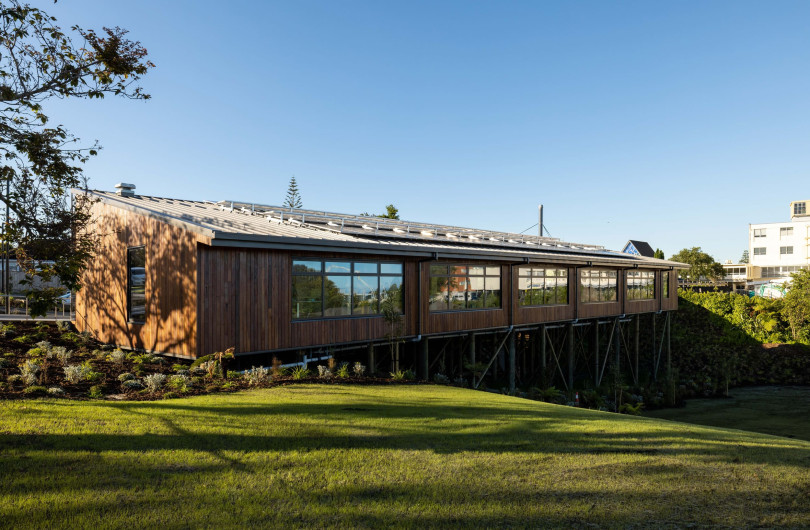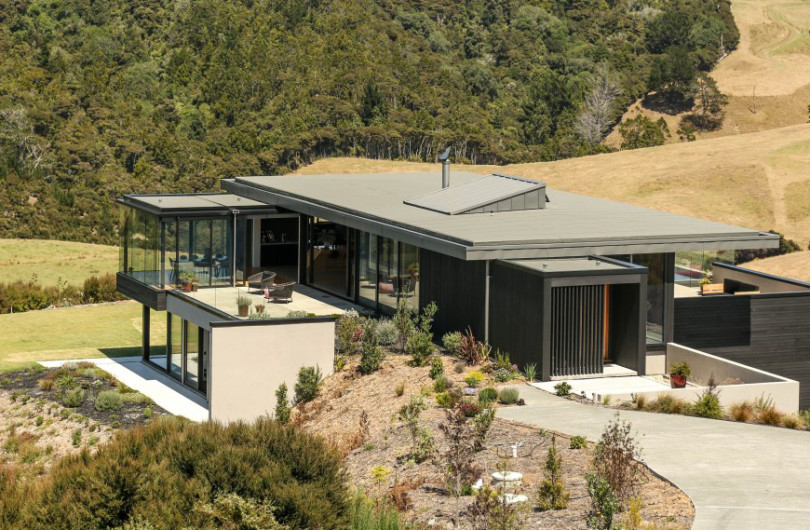There is a phenomenon in the housing industry known as ‘the missing middle’, a term originating from the USA (Parolek 2020). This describes cities that have single family houses at one end of the scale and large apartment buildings at the other end but are missing all the interesting medium density housing (MDH) types in between.
The American Institute of Architects (AIA) list the types of housing missing in the middle of Austin, Texas, as:
Du – Duplex
Tr – Triplex
Co – Courtyard Apartment
Gc – Garden Cluster
Rh – Rowhouse
Mu – Multiplex
Lw – Live Work
Until very recently, New Zealand had a missing middle as well, but we are now starting to get some of these types of housing in our cities. Taking our traditional post-war 100m² house on a 1,012m² section, our ‘traditional’ density equates to just four houses per acre, or ten houses per hectare (10du/ha). Densification from removing one house on that section and replacing it with two townhouses gives us only a small increase. Even going from 10 du/ha to 20 du/ha is not going to urbanise our cities enough to make a difference — and will have the effect of locking in place inadequate housing for the next 50 years.
To be fully effective, our density intensification needs to be aiming at the top end of our MDH scale, achieving around 60 du/ha. We are already underway, section sizes have not been produced at quarter-acre sizes for decades. Sections are now around 350-400m² each, which leaves us with a density 2.5 greater than we had in the 1950s. But that’s still not enough — we need to go much further. Not just two-storey townhouses, or sausage flats, but building a minimum of three storeys, everywhere. This is where the art of the missing middle, multi-storey, multi-unit design comes into play. Get it wrong and all we have is wall-to-wall terraced houses — Coronation Street all over again. Get it right and we have great cities in which to live, work and play.
The clear trade-off is between low-density housing with extensive, unused front, side and rear yards; versus medium-density with communal outdoor space. New Zealand is not at the stage of Hong Kong, with intensely high use of space and so we can afford to — and we need to — design housing around generous, comfortable outdoor spaces for everyone. This is not just a nice to have — this is a must have.
Medium density requires a different way of approaching public space than for single family suburban housing. The age of side yards and back yards and front yards needs to be completely reconsidered under MDH. The need, or want, of people to have a large lawn for children to play on is a very outdated concept, as is the inclination for this lawn to be mown every weekend. Instead, outdoor spaces are more like to be individual, like balconies, decks, roof decks etc., as well as more communal, such as gardens or communal lawn for all to share.
Designing good outdoor space is therefore one of the key aspects to creating a successful MDH project and needs to be considered first. The Auckland Design Manual is an excellent source for MDH ideas on successful community garden design, as is that from Victoria (Australia).
Auckland H6.6.15 dictates a minimum of 20m² outdoor space for ground floor and 5m² for upper floor apartments within the THAB zone. Sadly, Wellington City Council’s draft Residential Design Guide recommends but does not require any space at all. The new Government MDRS guidelines will supercede both of those by requiring a minimum outdoor space for ground floor units of 20m² at ground level or 8m² for their upper floor deck space — but this balcony/deck requirement will not apply to apartment buildings in the six to ten-storey range near RT stops. That seems unfair, arbitrary and wrong. People living on upper floors in buildings, such as apartment dwellers, need outdoor space most of all. (Refer to the Standards Model Factsheet at environment.govt.nz).
Back-to-back terraced housing is now an issue in New Zealand, a hundred or more years after people emigrated away from all that — only this time it is worse. Distances between houses are reduced, affecting standards of privacy and increasing perceptions of crowding. Impacts affecting the whole environment are the result of a collective decision to maintain the suburban arrangement of detached housing with direct vehicular access to each unit, rather than reconsideration of the choice of house type to suit higher levels of density (Turner, 2010).
In these studies privacy is seen to be associated with rights of territorial control and ownership; the defence of privacy becomes a matter of protecting personal rights through which individual achievements are externally measured. Reduced private space, a quantifiable fact of higher density housing, is experienced as an “invasion of privacy”, which may be further interpreted as “theft” or “stealing” (for instance, theft of “my backyard”, or “the landscape”) to suggest an actual material loss, as in a loss of property (Vallance et al, 2005). Be very careful with your planning to avoid overlooking of the neighbour’s yard. Provide adequate space for private outdoor activities in excess of the tiny minimums shown in MDRS. Carefully planned courtyard housing can offer far better results than side yards (Marriage, 2014).
Medium: A technical design guide for creating better medium density housing in Aotearoa New Zealand, written by Guy Marriage, offers best-practice guidance for the design and construction of medium density housing (MDH) in NZ, along with local case studies. Click here to register for a sponsored copy




























 Most Popular
Most Popular Popular Products
Popular Products



